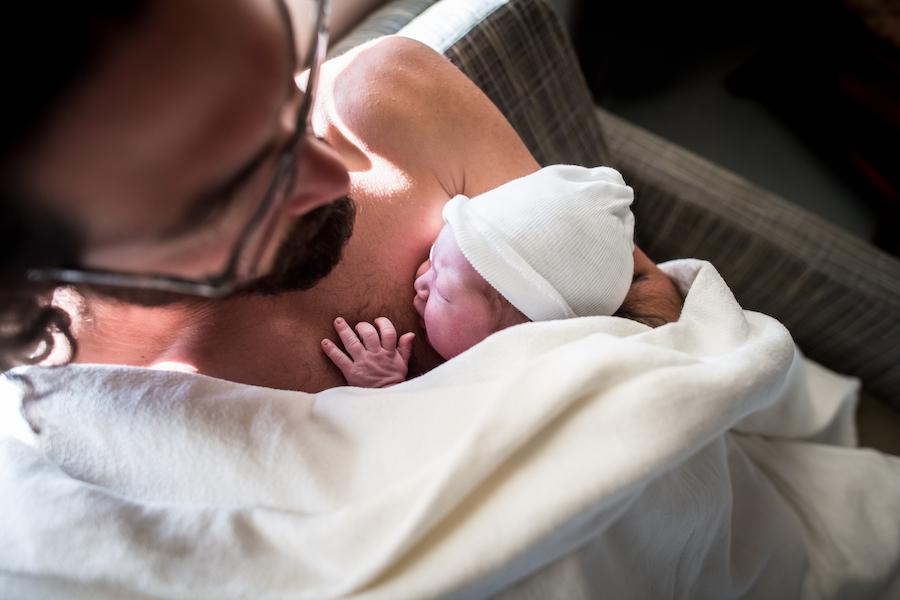One second after birth is the start of the next period—the time you have with your newborn infant. The first few days after childbirth are critical to the breastfeeding process. Research shows that it makes a big difference for breastfeeding if you hold your baby skin-to-skin (like a frog on your belly) directly after birth—or as soon as possible if mother and baby are separated for medical reasons.
The best breastfeeding preparations—three tips
The period immediately after birth is significant to the breastfeeding process, and the best three tips are:
1) Hold your infant skin-to-skin with baby’s airways free until he or she starts sucking or falls asleep. 2) Hand express/breast milk stimulate if baby has not sucked the first hours. 4) Pay attention to baby’s rooting and suck signals. Baby has nine stages in finding the breast.
We review each stage in detail below:
1) Skin-to-skin contact after birth Holding your baby skin-to-skin starts the good circle since this helps baby to keep warm, cry less and use less blood sugar reserves. Studies also indicate that infants more quickly start to suck on the breast, require less baby formula, breastfeed exclusively more often and for longer, and that mothers develop fewer breast complications if the infant is held skin-to-skin frequently in the beginning. In other words, research shows that breastfeeding benefits from skin-to-skin contact.
It is important that you constantly monitor your baby and make sure that baby’s airways are free! Never fall asleep with your baby lying skin-to-skin on your tummy. If you want to sleep with your baby skin-to-skin, you must make sure that your partner/another adult is supervising your baby.
2) Stimulates milk supply We know that the nursing hormones oxytocin and prolactin peak immediately after birth. Many babies suck then, but it is also possible that baby has a headache from the traction cup, feels nauseous and vomits, or falls asleep after a tough delivery and therefore does not take the breast. If so, you can hand express/stimulate milk supply instead.
An infant that has gone full term can survive the first day without any breast milk/colostrum. However, to start the supply of breast milk even if your infant does not want to suck/nurse at the moment, start to hand express/stimulate milk production soon after childbirth. Ideally many times and for short periods than seldom and long periods. The point is to stimulate the breast and it makes no difference if not a single drop of milk comes out. If a few drops of colostrum do come, give these to the infant using a clean finger, a spoon or a tiny medicine cup.
3) Pay attention to baby’s rooting and suck signals—Baby’s nine stages to nursing after birth Many healthy babies born at term follow this pattern—which is good to recognize—during the first hours after birth if placed skin-to-skin with the mother:
(1) The birth cry, (2) relaxes and rests after birth, (3) awakens, looks, makes small movements with the head, blinks and opens eyes, (4) makes mouthing and sucking movements, rooting and suck signals, moves the head, grabs hold with hands. (5) The baby then takes a break and rests a little, (6) moves toward the breast by crawling or sliding (often backwards). (7) The baby gets acquainted with the breast, by licking the nipple and massaging the breast. Be patient here and let baby take however much time is needed. After a while, baby will again start moving toward the breast. Baby might lie still and look at the mother and then start (8) to suck the breast and then (9) fall asleep.
How long each stage takes is different and varies from infant to infant.
